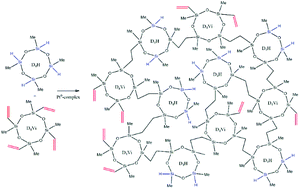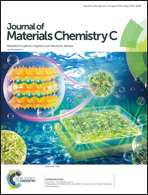Luminescent silicone materials containing Eu3+-complexes for photonic applications
Abstract
Luminescent materials obtained through the encapsulation of rare-earth (RE3+) complexes in different solid materials, are constantly used in much scientific research because of their broad range of applications in optoelectronics, luminescent solar concentrators, solid-state lasers, biomedicine, and sensors. Several materials have been explored as hosts of optically active species for photonic applications, however, silicone based materials are poorly exploited as optical materials due to their intrinsic properties, such as high hydrophobicity (water free) and difficulty of controlling the reaction kinetics for the avoidance of bubbles and cracks. Despite these drawbacks, silicones can be obtained as bulk or films, showing a broad transparency in the visible range, mechanical flexibility, and thermal and chemical stabilities. In this work, we report the synthesis and investigation of a set of highly red emissive [Eu(tta)3(H2O)2]-doped silicone samples obtained by the incorporation of a [Eu(tta)3(H2O)2] complex during the hydrosilylation reaction between D4Vi and D4H cyclic silicone monomers. Bulk samples were successfully obtained with different Eu3+-complex concentrations and characterized by TG, DSC, FT-IR, Raman spectroscopy, absorption, and photoluminescence (excitation, emission and lifetime) and the Judd–Ofelt intensity parameters were determined and are discussed. The novel luminescent silicone based materials are promising for photonic applications because of their strong visible luminescence and fair mechanical and thermal stability, providing a new practical approach for optical materials with the interesting chemical features of the silicone host combined with the high luminescence of the RE3+-complexes. As a practical application, we demonstrated the potential of the [Eu(tta)3(H2O)2]-doped silicone materials as luminescent sensors or dosimeters of UV-light by evaluating their luminescent properties as a function of tta ligand photodegradation when exposed to UV-light.

- This article is part of the themed collection: Materials and Nano Research in Brazil


 Please wait while we load your content...
Please wait while we load your content...